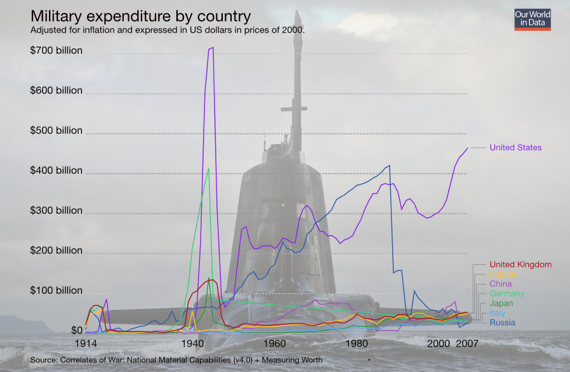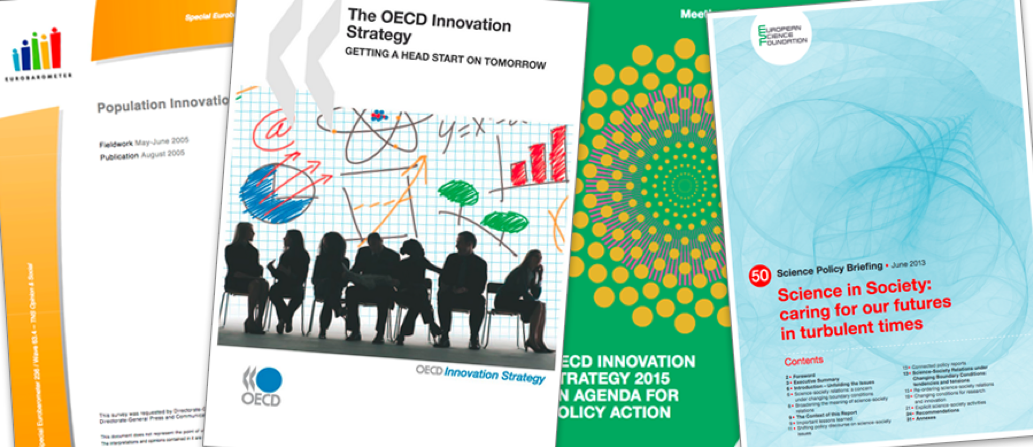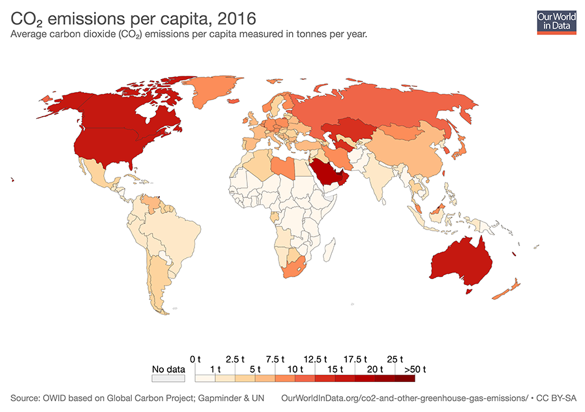
Which way? Who Says? Why? Questions on the Multiple Directions of Social Progress
Technology’s Stories vol. 6, no. 2 – DOI: 10.5763/jou.ts.2018.05.14.02
PDF: StirlingODonovanAyre_Which Way
For better or worse, science and technology are both deeply entangled in “social progress”. This is the case equally in discourse and practise around the world. In areas such as health, wealth, energy, mobility, and communications, it is widely recognized that remarkable historical improvements— at least for some— all owe much to science and technology. However, it is equally important to acknowledge that not all consequences of research and innovation are positive. Nor do any benefits unfold automatically — especially if they are to be fairly distributed.
For instance, few would argue that new forms of tax avoidance, covert state or corporate surveillance [1], or weapons of mass destruction constitute positive applications of science and technology. Yet, many of these are highly active areas in contemporary innovation. Indeed, it is currently the case that the single largest global area for public investment in science and technology lies in military- and security-related applications. [2]

Figure 1 It is currently the case that the single largest global area for public investment in science and technology lies in military- and security-related applications . Image credits: (cc) Defence Images on Flickr; Our World in Data.
In this context, good governance of progress is not just about maintaining a balance between social gains and inherent risks in any given pathway for advance. It is more a question of the direction in which progress is seen—and incentivized— to unfold. The dimensions and uncertainties raised in this challenge are a matter for technical expertise as well as social values and political judgements. When research and innovation pathways are driven and steered only by narrow academic, commercial or governmental interests, the results will tend to sideline less-privileged perspectives.
Yet, it is often the case that some of the most significant re-orientations in the directions taken by science and technology have been due not to orderly “evidence-based”, top-down policy debates, but to more unruly waves of bottom-up collective action by social movements. For instance, it is difficult to envisage the formative advent of nineteenth century urban sewerage systems without the driving energy of social mobilization and Victorian philanthropism.[3] Nor are the enormous late twentieth-century gains in healthcare credibly explained without reference to the enabling effects of political pressures for welfare states. The currently burgeoning forms of renewable energy, sustainable agriculture and ecological production were likewise all pioneered by marginalized activist organizations—often strongly opposed by institutions associated with mainstream science and technology.[4] The rising interest in the importance of social and grassroots innovation as a means to help achieve social progress is informed by a current appreciation for the depth and extent of these real drivers of progressive directions for research and innovation.[5]

Figure 2 Repower Balcombe, an example of sustainable production pioneered by community and activist organizations in the English village of Balcombe. Image credit: (cc) tentenuk on Flickr
Another factor that shapes the ability of science and technology to assist or obstruct social progress in any given area is the allocation of resources in support of various research and innovation pathways. Again—although typically treated as a matter only for expertise—there are strong political and social dimensions to this. A host of economic and institutional strategies determine investment for innovation across areas as diverse as agriculture, pharmaceuticals, energy, and materials, many of which are divorced from any direct measure of social progress. Indeed, the principal incentives bearing on existing research and innovation systems typically arise from pressures to maximize private returns on investment. Even publicly funded research tends to be strongly disciplined by prospects for onward commercialization. In addition, it is often surprisingly difficult even to obtain clear information on the overall balance of resources allocated to alternative pathways, let alone subject them to democratic oversight or accountability.[6]
So, innovation activity in most countries tends to be concentrated disproportionately around commercial considerations—appropriating value in associated supply chains[7] or increasing market share across mutually interdependent products [8]—rather than focusing directly on wider human wellbeing. Innovations which do not seem as likely to offer the prospect of such private benefits are typically much less enthusiastically developed. While open-source innovation, distributed social practices, or preventive health behaviour may often be more effective at realizing social progress in any given area,[9] typically these will be disfavoured by a preference for scientific and technological advances that better enable the securing of private benefits.
However social progress is construed, then, there are no guarantees that the interests and incentive structures operating in scientific research or technological innovation systems will parallel the challenges and opportunities prioritized in the wider society. Those who are already most marginalized and vulnerable in society at large, are typically most excluded in innovation, as well. This is not simply a reflection of the market failing to mobilize commercial cultures and incentives to address wider social needs. It also indicates a failure in governance. For example, the fact that public sector efforts in research and innovation are so preoccupied with military and security technologies shows governance failures to be much wider than those of the market. [10]
Of course, fortunate occurrences of “spin-off”—where technologies pursued for one purpose yield benefits in some contrasting area—may to some extent mitigate the effects of this innovation–society mismatch.[11] But, even spin-off applications can bear indelible imprints of their original driving values—as with “lock-in” around military priorities in design traditions for civil nuclear power. All in all, there can be no denying that efforts to realize social progress through science and technology can experience serious divergences between the private incentives operating in research and innovation and wider ideas of the public good.
|
There are many reasons, then, to challenge the notion of any simple relationship between technological change and wider social progress. Without the right kinds of cultures, institutions, and political economies, it is not possible for the most socially progressive innovations to develop in the first place, nor to be prioritized or to diffuse or advance in the required ways. The potential of science and technology to help realize social progress remains enormous. However, for this to happen it is essential to ensure appropriate incentives and encourage clarity, transparency, and accountability.
This is why it is so unfortunate that policy debates around the world overwhelmingly view the formative relation between technology and society in a one-track fashion. It is assumed that each emerging innovation will usher in a wave of apparently necessary forms of onward adaptation in social organizations, behaviours, politics and cultures, rather than the other way around. It is striking how political imaginations are constrained by conventional debates. In areas such as energy, chemicals or biotechnology, for example, the choices for innovation are restricted to the balancing of “risk” and “benefit” in some singular and supposedly inevitable direction for advance. Too often, the issues are reduced simplistically to a spectrum from “forging ahead” to “falling behind”, as if the direction were predetermined or self-evident. Aims at fair distribution are restricted more to hopes of “trickle down”, than the characters of the innovations themselves.
With policy “road maps” typically featuring only a single “way forward”, policy debates in supposedly democratic settings can become shockingly circumscribed. It is this kind of language and constrained imagination that can leave research and innovation of particular kinds effectively unquestioned and unaccountable, making them highly vulnerable to narrow incumbent interests, rather than allowing them to be driven effectively by wider imperatives of social progress.
With futures increasingly conceived in these terms, debates over science and technology also become preoccupied with competitive pressures merely to “accelerate” emerging and converging trajectories for advancement, rather than “steering” them. As anxieties grow over the implications of ever more competitive modes of globalization, these visions of social progress that are driven disproportionately by science and technology are intensifying. Meanwhile, governments and businesses around the world increasingly emphasize the driving roles of science and technology, asserting the importance of developing “population innovation readiness”[12] for “knowledge societies”[13], and “pro-innovation policies”.[14] What is striking about this language is its lack of reference to exactly which kinds of science, technology or innovation it is intended to favour, and which to discourage, in any given area.

Figure 3 The language of innovation policies often neglect specifying which kinds of science, technology or innovation is being favoured.’ Image credit: authors’ montage
It is these attitudes from governments and businesses that encourage the routine branding of public reactions to a particular technology, such as GM crops or nuclear power, as “anti-science”, as if such responses represented an indiscriminate opposition to science in general.[15] This, again, entirely excludes the actuality that science and technology, like other kinds of institutional change, are branching evolutionary processes rather than a one-track race.[16] Just as market competition is held to favour the maximizing of economic performance, so political contestation in democratic societies might ideally help to steer the trajectories for science and technology in the most socially desirable directions. In this light, all the language and apparatus summarized here around supposedly generally “pro-innovation policies” or indiscriminately “anti-science” public reactions (the back and forth of “forging ahead” and “falling behind”) are not only deeply irrational and misleading, but actively serve to undermine this democratic process of steering.[17]
Despite their uneven and contingent success, research and innovation are typically characterized as primary drivers of progress. Rather than being recognized as a choice among plural directions across multiple dimensions, research, and innovation are reduced to a single one-track race. Scope for debate is thus restricted merely to queries over “how much?”, “how fast?”, or “what risk?”. Crucial questions are neglected over “which way?”, “who says?”, and “why?”.[18] This seriously suppresses scope for democratic struggle and mature political deliberation over both the speed and the direction of social progress.
Uneven progress on the environment
One area where we encounter these challenges head-on is in addressing urgent concerns about the environment. Indeed, one of the most striking features of world politics over the past half century has been the rising salience of such issues. Initially driven by grassroots environmental and other social movements, environmental challenges now form the single most voluminous arena for international law. With the Earth itself knowing no borders (unlike the formal structures of international political orders), pressures for improved international environmental governance have been major drivers of institutional regimes constituting wider globalization.
Social, economic, and political processes intersect and influence environmental processes. Economic and political justice are inextricable from environmental justice. As formally recognized in current global “Sustainable Development Goals”, inequalities of any kind (including those based on class, gender, ethnicity, or citizenship), are antithetical to sustainability.[19] Yet, by the mid-2000s, the US and Canada (for instance), with only five per cent of the global population, accounted for 27 per cent of global oil consumption—and associated pollution. Per capita emissions within regions are also extremely variable: North America produces 20 tons of carbon dioxide per person per year; Europe about eight; Africa one.[20]

Figure 4 Per capita carbon dioxide emissions, 2016
Although worldwide debates over the environment are now dominated by the imperative to halt anthropogenic global climate change, human assaults on nature also take many other forms, threatening similarly uncertain but possibly catastrophic consequences. Climate disruption and sea level rise are joined by chemical contamination, accumulating toxic wastes, atmospheric pollution, ecological destruction, soil erosion, population growth[21], urban spread, resource depletion food insecurity, water deprivation, ocean acidification, landscape degradation, novel pandemic risks, antimicrobial resistance, food-borne diseases, nuclear accidents[22], ionizing radiation, genetic interference, weapons of mass destruction, disruption of global material cycles, and direct forms of oppression of other living beings.[23] All of these represent distinctive environmental challenges across various definitions of social progress. The grave intensity of each of these human impacts combine in a potentially exponential “perfect storm” of cumulative interactions.[24]
As with other aspects of social progress, however, the general problems are easier to discern than their associated appropriate responses. Despite many divergent views regarding the implications, magnitude, distributions, and urgency of environmental challenges, convergence toward technology-fix solutions is evident.[25] One example of “technocratic environmentalism” is the view of many economists that a suite of technical tax and subsidy policies could incentivize sufficient environmentally respectful behaviour to effectively deal with most environmental problems. A more radical technocratic view, associated with analyses of the advent of a supposed new “Anthropocene” geological epoch signalling “human dominion” [26], calls for intensified attempts at control over the Earth—involving “management” of “planetary control variables”.[27] In such views, “progress” becomes exemplified by new global institutions and infrastructures such as those argued to be required for “climate geoengineering” in order to address global warming.[28] Increasingly, the emphasized gravity and urgency of environmental challenges are held to demand moves towards new forms of “environmental authoritarianism”[29], under which democracy is openly dismissed as a “luxury” that should be “put on hold”.[30]

Figure 5 Cockpitism and new forms of environmental authoritarianism dismiss democracy as a luxury that should be put on hold. Image credits: (cc) Defence Images on Flickr
Under an alternative perspective, however, it is exactly these kinds of “fallacies of control”[31] and associated “cockpitism”[32] that constitute the core of the problem. Alongside other more human forms of exploitation, environmental destruction can in this sense be seen as a symptom of powerful interests and privileged groups being insulated from the consequences of their exploitative practices.[33] In this view, the task of reversing adverse impacts on vulnerable natural environments presents effectively the same political challenge as resistance to more exclusively human forms of oppression.
In this analysis, social progress is best realized not by concentration of power in vertical global structures for planetary control, but by the reinforcing of mutualistic horizontal relations of solidarity, under which people in more equal societies are incentivized to exercise greater care not only for each other, but also for the environments in which all live.[34]
Andy Stirling
Andy Stirling is Professor of Science & Technology Policy at SPRU – Science Policy Research Unit where his research assists in efforts to ‘democratise progress’.
Cian O’Donovan
Cian O’Donovan is a Research Fellow in science and technology studies at SPRU – Science Policy Research Unit, University of Sussex.
Twitter: @cian
Becky Ayre
Becky Ayre is a Communications and Engagement Officer at SPRU – Science Policy Research Unit, University of Sussex.
Twitter: @beckyayre

About Rethinking Society on Technology’s Stories
This article is one of a series of contributions drawn from or inspired by the International Panel on Social Progress. The IPSP is a global academic initiative of more than 300 scholars from all social sciences and the humanities who have contributed to Rethinking Society for the 21st Century https://www.ipsp.org/, a report on the prospects for social progress today. This special collection for Technology’s Stories marks the publication of the report and offers important insights from a cross-cutting IPSP theme that sought to examine the role of science and technology, as it contributes – or not – to social progress. An introduction to the special collection can be found here. https://www.technologystories.org/crafting-stories/
This special collection of Technology’s Stories was edited by Cian O’Donovan and Becky Ayre at SPRU – Science Policy Research Unit, University of Sussex. The editors gratefully acknowledge the assistance of Technology’s Stories editor-in-chief Suzanne Moon and her team.
[1] Zuboff, Shoshana. 2015. “Big Other: Surveillance Capitalism and the Prospects of an Information Civilization,” Journal of Information Technology 30, 75–89.
[2] Government Office for Science. 2014. Innovation: Managing Risk, not Avoiding it – Evidence and Case Studies (Annual Report of the Government Chief Scientific Adviser 2014), London.
[3] Geels, F.W., 2006. “The Hygienic Transition from Cesspools to Sewer Systems (1840–1930): The Dynamics of Regime Rransformation.” Research Policy, 35(7), pp.1069–1082
[4] Joergensen, U. and Karnoe, P. 1991. “The Danish Wind Turbine Story – Technical Solutions to Political Visions?” In A. Rip, J, Mise. And J. Schot (eds), Managing Technology in Society: The Approach of Constructive Technology Assessment. London: Pinter Publishers, p. 57-82
[5] Smith, A. et al. 2016. Grassroots Innovation Movements, London: Routledge Earthscan
[6] Stirling chapter in Beddington chief scientist report
[7] Kaplinsky, R. 2000. “Globalisation and Unequalisation: What Can Be Learned from Value Chain Analysis?” Journal of Development Studies, 37(2), pp.117–146.
[8] Porte, T.R. la ed. 1991. Social Responses to Large Technical Systems: Control or Anticipation, The Netherlands: Kluwer Academic Publishers
[9] Government Office for Science, 2014. Annual Report of the Government Chief Scientific Adviser 2014 – Innovation: Managing Risk, not Avoiding it – report overview
[10] OECD, 2013. Main Science and Technology Indicators: Volume 2013; Alic, J.A., 2007. Trillions for Military Technology: How the Pentagon Innovates and Why It Costs So Much, New York: Palgrave MacMillan
[11] Chesbrough, H., 2003. “The Governance and Performance of Xerox ’s Technology Spin-off Companies,” Research Policy 32, pp.403–421
[12] Eurobarometer, 2005. Population Innovation Readiness, Brussels
[13] Felt, U. et al., 2008. Taking European Knowledge Society Seriously: Report of the Expert Group on Science and Governance to the Science, Economy and Society Directorate, Directorate-General for Research, European Commission U. Felt & B. Wynne, eds., Brussels: European Commission
[14] Sveiby, Karl-Erik, Pernilla Gripenberg and Beata Segercrantz, eds. 2012. Challenging the Innovation Paradigm. New York: Routledge
[15] Felt, U. et al., 2013. Science in Society: Caring for Our Futures in Turbulent Times, Strasbourg: European Science Foundation
[16] Nelson, R.R. and Winter, S.G., 1977. “In Search of a Useful Theory of Innovation.” Research Policy, 6, pp.36–76; Dosi, G. and Nelson, R.R., 1994. “An Introduction to Evolutionary Theories in Economics.” Journal of Evolutionary Economics, 4, pp.153–172; Williams, R. and Edge, D. 1996. “The Social Shaping of Technology,” Research Policy, 25(6),
pp.865–899
[17] OECD, 2010. The OECD Innovation Strategy: Getting a Head Start on Tomorrow – Executive Summary, Paris.
[18] Stirling, A. 2008. “Opening Up” and “Closing Down”: Power, Participation, and Pluralism in the Social Appraisal of Technology.” Science, Technology and Human Values, 23(2), pp.262–294
[19] Wilkinson, Richard G., and Pickett, Kate. 2009. The Spirit Level: Why Greater Equality Makes Societies Stronger. London: Allen Lane; Neumayer, E. 2011. Sustainability and Inequality in Human Development. United Nations Development Programme, Human Development Reports, Research Paper 2011/04
[20] World Bank, 2007. World Development Indicators. http://data.worldbank.org/products/data-books/WDI-2007
[21] UN.2015. World Population Prospects: Key Findings and Advance Tables. New York: United Nations.
[22] FAIC, 2012. The Fukushima Nuclear Accident Independent Investigation Commission, Tokyo
[23] Singer, P. 2002. Animal Liberation, London: Harper Collins.
[24] Beddington, J., 2009. Food, Energy, Water and the Climate: A Perfect Storm of Global Events?, London; WEF, Waughray, D. and Workman, J.G. 2014. “Water Security: The Water-Food-Energy-Climate Nexus,” Igarss 2014, (1), pp.1–5
[25] Stirling, A. 2015. “Emancipating Transformations: From Controlling “the Transition” to Culturing Plural Radical Progress.” In I. Scoones, M. Leach, and P. Newell, eds. The Politics of Green Transformations. London, pp. 54–67
[26] Hamilton, C., Bonneuil, C. and Gemenne, F. eds. 2015. The Anthropocene and the Global Environmental Crisis: Rethinking Modernity in a New Epoch, London: Routledge
[27] Rockström, J. et al. 2009. “A Safe Operating Space for Humanity.” Nature, 461(24 September), pp.472–475.
[28] Shepherd, J. et al. 2009. Geoengineering the Climate: Science, Governance and Uncertainty, London: The Royal Society
[29] Beeson, M., 2010. “The Coming of Environmental Authoritarianism.” Environmental Politics,
19(2), pp.276–294
[30] Hickman, L. 2010. “James Lovelock: Humans are too Stupid to Prevent Climate Change.” Guardian, (29 March), pp.2–5.
[31] Stirling, A. 2015. “Emancipating Transformations: From Controlling “the Transition” to Culturing Plural Radical Progress.” In I. Scoones, M. Leach, and P. Newell, eds. The Politics of Green Transformations. London, pp. 54–67
[32] Hajer, M. et al. 2015. “Beyond Cockpit-ism: Four Insights to Enhance the Transformative Potential of the Sustainable Development Goals.” Sustainability, (February), pp.1651–1660.
[33] Goldman, M. and Schurman, R.A., 2000. “Closing the “Great Divide”: New Social Theory on Society and Nature.” Annual Review of Sociology, 26, pp.563–584; Perreaul, T., Bridge, G. and McCarthy, J. eds. 2015. The Routledge Handbook of Political Ecology, London: Routledge.
[34] Stirling, A. 2016. “Knowing Doing Governing: Realizing Heterodyne Democracies.” In J.-P. Voß & R. Freeman, eds. Knowing Governance: The Epistemic Construction of Political Order. Basingstoke: Palgrave Macmillan.
